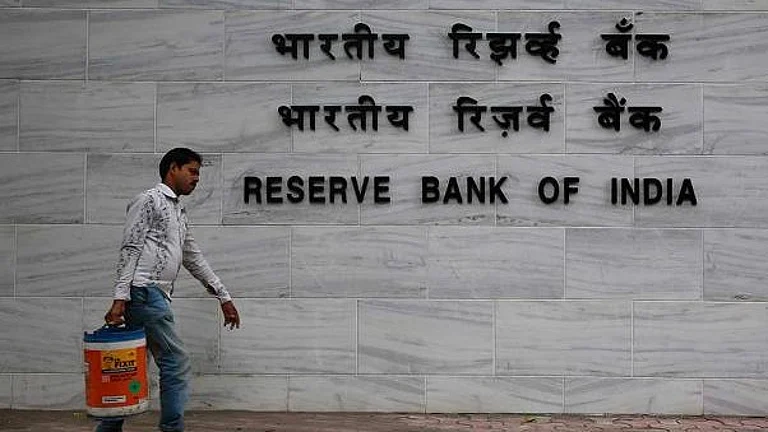
MPC keeps repo rate at 5.50%, maintaining a neutral monetary stance
SDF at 5.25%, MSF and bank rate held at 5.75%, CRR unchanged at 3.00%
Real GDP growth for FY26 projected at 6.5%, aided by robust southwest monsoon
Core inflation firm at 4.0%, headline risks persist from food and fuel volatility
The Reserve Bank of India’s Monetary Policy Committee (MPC) on Wednesday voted unanimously to keep the key policy repo rate unchanged at 5.50%, ending a succession of rate cuts earlier this year.
In a press briefing following the meeting, Governor Sanjay Malhotra announced the stance to be “neutral”, as the central bank balances growth support with inflation containment.
Key Policy Rates
The committee opted to maintain all key policy rates at their existing levels: the repo rate was held steady at 5.50%, while the standing deposit facility (SDF) rate remained at 5.25%. The marginal standing facility (MSF) rate and the bank rate continued unchanged at 5.75%, and the cash reserve ratio (CRR) was kept at 3.00%.
Governor Malhotra noted that while headline inflation has moderated somewhat, core inflation remains firm at 4.0%, warranting a cautious approach. “Inflationary pressures are expected to remain elevated in the near term,” he said, pointing to food and fuel price volatility and global uncertainties as risks. A robust southwest monsoon and favorable agricultural outlook, however, continue to underpin domestic growth prospects.
Growth & Inflation Projections
Real GDP growth for FY26 is projected at 6.5%, with quarterly estimates of 6.5% in Q1, 6.7% in Q2, 6.6% in Q3, and 6.3% in Q4.
Inflation is expected to remain within the RBI’s target band of 4% plus or minus 2%, although the committee underscored the need to stay vigilant against potential upside risks.
The RBI now expects headline inflation to average 3.1% in FY26, lower than the 3.7% projected earlier. However, CPI is likely to rise to 4.9% in Q1 FY27, above the central bank’s 4% target.
Inflation projections by quarter are 2.1% in Q2, 3.1% in Q3, and 4.4% in Q4. The MPC noted that food prices, particularly vegetables, could remain volatile in the coming months. While geopolitical tensions have eased, fresh tariffs and import-related pressures may weigh on future price stability.
This policy decision follows a 50 basis-point cut in June, the third reduction since February, undertaken to cushion the economy against global trade tensions, tariff uncertainties, and slowing export demand. By holding rates now, the MPC aims to ensure that the monetary stimulus provided earlier does not stoke further inflationary pressures.
Anuj Puri, Chairman, ANAROCK Group said, “….A rate cut leading to lower interest rate environment would have particularly boosted the affordable housing segment, which has been under considerable pressure in recent years…..That said, overall, homebuyers are currently driven by long-term confidence rather than short-term rate fluctuations. Given the upcoming festive season, developers may look to keep the market momentum going with offers and flexible payment plans, which may help improve affordability for many genuine buyers.”
Suvodeep Rakshit, Chief Economist, Kotak Institutional Equities (KIE) said, "...We expect the RBI to keep liquidity adequately in surplus to ensure continued transmission of the rate cut cycle. We believe that the RBI will likely remain on a long pause as it focuses on the FY2027 inflation trajectory and growth impulses remaining steady. The bar for a dovish shift will be higher from here on and dependant on substantial downside to growth prospects".
Dipti Deshpande, Principal Economist, Crisil Ltd, on the Monetary Policy Committee review said, "...We expect one more repo rate cut this fiscal. A benign inflation outlook and risks from US tariff hikes to economic growth will be the key determinants.
The sharper than expected fall in retail inflation in the past two months was driven by volatility in vegetable prices and subdued inflation in foodgrains.
Assuming a normal and well-distributed monsoon this season and benign global crude oil prices, we foresee CPI inflation averaging 3.5% this fiscal.
The transmission of the repo rate cuts would continue, lifting consumption demand, particularly in the urban areas. Rural consumption will be buoyed by another spell of adequate monsoon and consequently, higher agricultural incomes.
But overall economic growth faces challenges from global uncertainties, particularly the downside to trade from higher US tariffs.
Our forecast of India’s GDP growth remains unchanged at 6.5% with downside risks."

































